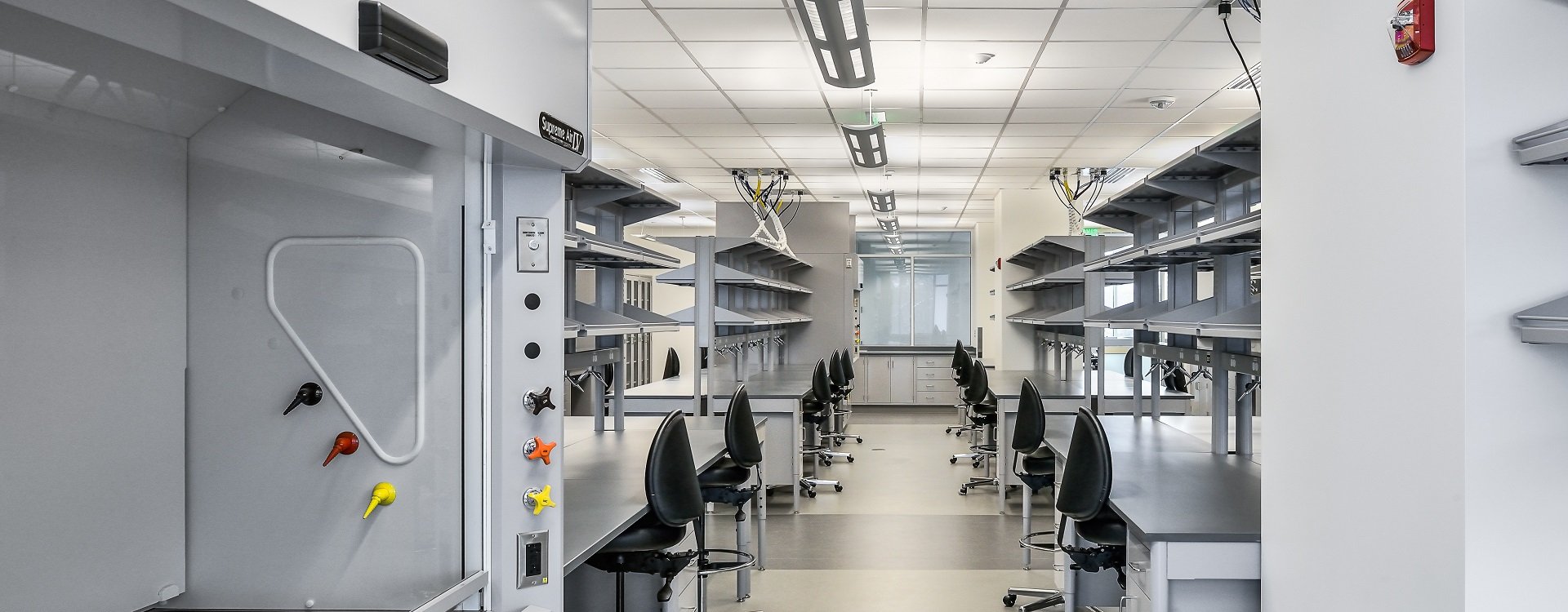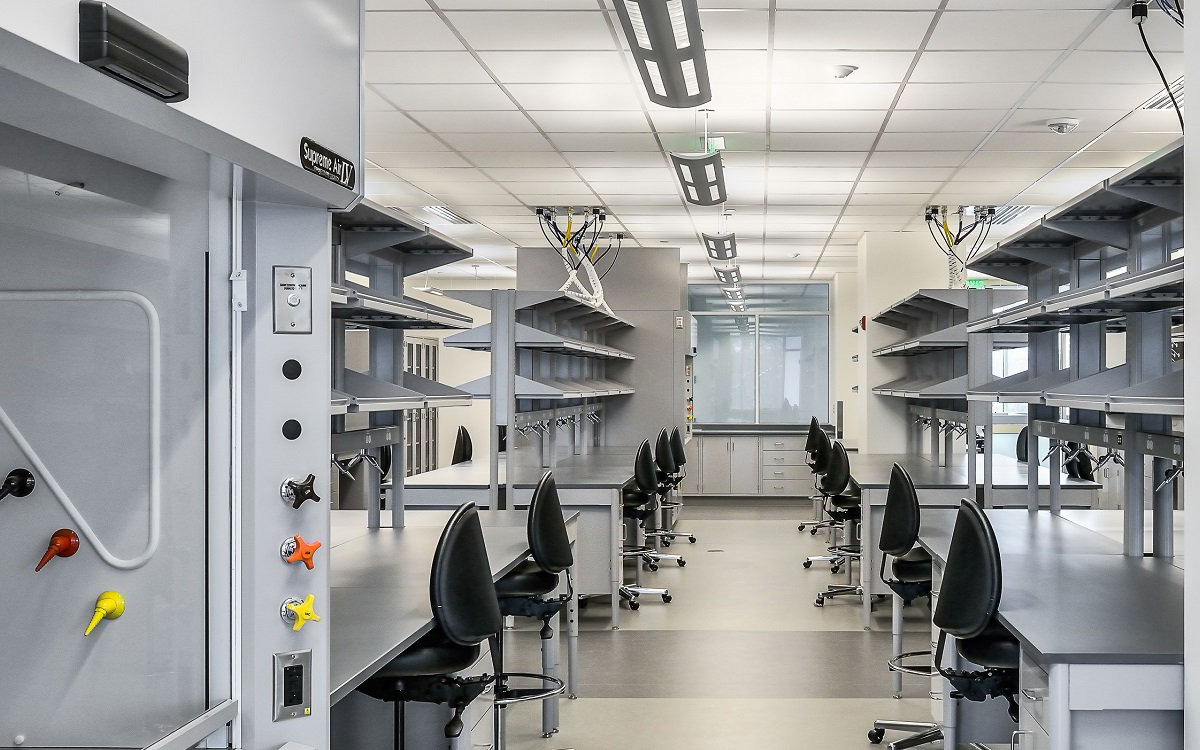Physical Hazards of Laboratory Safety: Pay Attention to Your Feet
Date: 2022-01-19 Source: RUANQI Classification: Resources
Research facilities, especially laboratories, are difficult problems in safety work. This month, safety personnel will remind you of possible major physical hazards in the workplace.
Pay attention to the surrounding environment and avoid physical hazards
What do we mean when we say "physical hazard"? In general, they include situations and conditions that can lead to slips, trips and falls. However, if you are dealing with animals, they also include the possibility of bite, scratch and contact injury. However, in addition to these common problems, we hope you will start to consider less obvious hazards, such as electrical safety hazards and high noise areas.
Let's start with something simple
Many injuries result from poor housekeeping. Slips, trips and falls are too common and easy to avoid. First, arrange the storage area to avoid the danger caused by material storage. Stacked and interlocked bags, containers and boxes are stored in layers. Limit the height to keep the layer stable and prevent tilting, sliding or collapse. Minimize the chaotic accumulation of materials that may cause tripping, hinder access or have a fire risk.
Next, carry out general facility inspection, focusing on walking / working face, lighting and exit passage. Emergency exit routes must be kept clear at all times. Make sure that the floor is smooth and free from cracks or openings that could get stuck or trip. Check storage racks, trolleys and other equipment to ensure good mechanical condition. Pay special attention to casters. Pay attention to the lighting conditions and measure the illuminance of areas that look dim. Compare the results with those recommended by ies and ANSI. Ensure that all lights within 7 feet of the floor are protected from accidental damage. Before installation, slide the plastic protective tube on the plastic bulb or install the screen on the lamp. Finally, pay attention to areas with special lighting requirements.
You may be shocked
Please pay attention to electrical hazards during facility inspection. Problems often found include improper use of extension wires or cutting, torn or worn insulated wires, exposed wiring, lack of grounding plugs, opening of electrical panels and overload circuits. Electrophoresis equipment, biosafety cabinet and wet vacuum system have less obvious hazards. Pay close attention to wet areas: install all power sockets in wet places and equip with ground fault circuit breaker (GFCI) to prevent accidental electric shock. When a small amount of current begins to flow to ground, GFCI is designed to "trip" and disconnect the circuit. Wet locations include outlets within six feet of sinks, taps or other water sources, and outlets located outdoors or in areas that are frequently flushed.
Improper use of flexible extension cords is one of the most common electrical hazards. Extension cords shall not replace permanent wiring. Check the insulation to ensure that it is intact and insert it into the end of the plug. Do not use tape to repair cracks, breaks, cuts or tears. Discard or shorten the extension cord by installing a new plug end. Be careful not to put the extension wire through the door or window, where it will be clamped or cut. Only use grounding equipment and tools, and do not pull the grounding pin from the plug end. Don't connect multiple extension cords together to meet your work needs, just get the right length for the work.
Another thing to check is the electrical panel. Make sure to always put three feet of clear space in front of these spaces. In addition, each circuit breaker shall be clearly marked. Finally, the use of hanging lights or power sockets is becoming more and more common and can help keep wires on the floor and unhindered. If required, check electrical pendant for proper strain relief, box type and guards. In a recently visited facility, an accident occurred when an unguarded suspended exit was "grabbed" by a forklift from below. Fortunately, the forklift driver was not electrocuted.
Can you hear my voice?
Many areas within the research facility are noisy in nature. The equipment used may produce excessive noise, such as ultrasonic instruments, high-pressure air purification equipment and wet vacuum system. Exposure to loud noise can cause hearing loss. Noise induced hearing loss is permanent and cannot be treated with drugs. This type of hearing loss is usually noted by a reduction in response to frequencies higher than 2000 hertz (Hz). Because the normal human voice is in the range of 2000Hz to 4000Hz, the hearing loss caused by noise will weaken people in work and daily life.
OSHA limits employee noise exposure to an average of 90 decibels (DB) for an 8-hour work shift measured at level a and a slow response measured using a standard sound level meter. If the noise level exceeds 85dB, the employer must implement a hearing protection plan (HCP) to avoid employee exposure. The American Conference of governmental industrial hygienists recommends a threshold of 85dB or more conservative as an 8-hour time weighted average. HCP requires monitoring, annual hearing test, hearing protection, training and record keeping.
A quick and useful way to check for excessive noise in the area is the "conversation test". Stand one to three feet away from another person and try to have a normal conversation in a noisy area. If the conversation is difficult or inaudible, the noise may be too loud. The area shall be evaluated by qualified personnel with knowledge of occupational noise, measurement technology, data analysis and control alternatives.
The control of excessive noise is divided into three categories: engineering control, administrative control and personal protective equipment. According to OSHA standards, engineering control is first used to control hazards. This can include purchasing newer, quieter equipment, shielding or installing acoustic insulation on walls and ceilings. Management control needs to limit the time spent by employees in noise hazard areas, or designate more than one employee to allocate the time required to complete tasks. The last line of defense against excessive noise exposure is personal protective equipment, such as earplugs or earmuffs.
We just started
In this issue of the magazine, we introduce some physical hazards that you can see and have an immediate impact on the safety of your facility. In the upcoming issues, we will further study other issues, such as mechanical equipment hazards and ergonomic hazards related to the use, lifting, push and pull of materials and equipment. Until the next issue, remember - Safety first!




